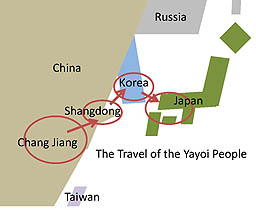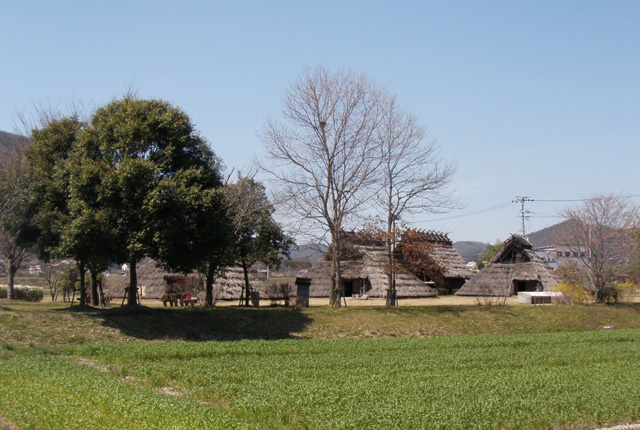
On the last Saturday and Sunday, I was in Takamatsu for the latter half of the basic course of Adlerian Psychology. Today, I took a vacation and go fishing to a river in Hyôgo prefecture. The river was very beautiful, but no fish was found.
Near the river, there was a park where a village of the Yayoi era was rebuilt. Two roots of the Japanese are known; one is the Jômon people, and the other is the Yayoi people. We do not know when the Jômon people came to the Japanese Islands, but we can trace their culture to 14,000 B.C.E. which is characterized by the peculiar earthenware with jômon, straw-rope pattern. The Yayoi people emigrated to Japan from 1,000 B.C.E. They lived originally in the basin of Chang Jiang, sometimes called the Yangtze River, in China. The Han race, which was the majority of China, pressed them, and they moved to the Shangdong Peninsula and then to the southern part of Korea. After that, they emigrated to Kyûshû, the west island of Japan and disseminated into all over Japan. The village I found was the remains of the Yayoi people.

The Yayoi people did not come to Japan at a time, but emigrated little by little. Anyway, after they came, this country was gradually covered by their culture. They brought agriculture, while the Jômon people lived by hunting and gathering. They came by small boats from the continent, and wandered along the coast of Japan to find a place good for cultivation. Both the Shangdong Peninsula and the Korean Peninsula were not suitable for rice field. They were pleased to “discover” Japan and called it “Toyo ashihara mizuho no kuni“, a country of the rich fields of reeds suitable for rice making.
Near the park, a village of the Jômon was also discovered. Surprising to say, we can scarsely find the trace of battles between the Jômon and the Yayoi people. The Jômon people must not have had the idea of landholding. Therefore, when the Yayoi people came and began to plow the field, the Jômon people did not feel to be robbed of the land. At first, both people may have begun the silent trade and exchange farm products and fishes and meats. Both sides were benefited and they coexisted peacefully. They may exchange brides, and, before long, they melted with each other. I am very proud of this process; the Japanese were the peaceful people from the beginning.

